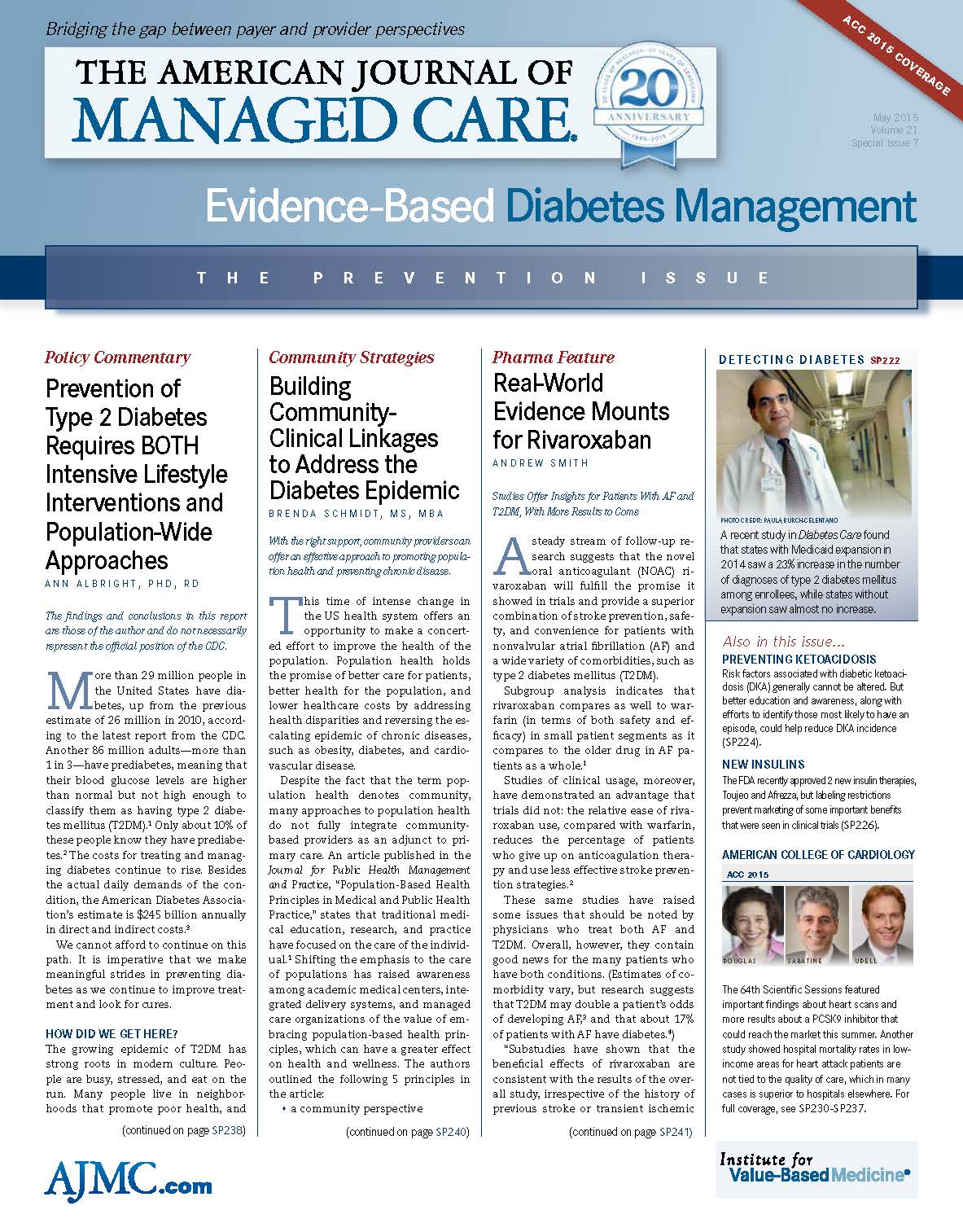- Center on Health Equity & Access
- Clinical
- Health Care Cost
- Health Care Delivery
- Insurance
- Policy
- Technology
- Value-Based Care
Focusing on Prediabetes Is the Key to Reversing the Rise in Diabetes
Evidence-Based Diabetes Management invited the YMCA's Jonathan Lever, vice president for health strategy and innovation, to comment on his organization's involvement with the National Diabetes Prevention Program.
Recent statistics from the CDC show that 86 million people in the United States have prediabetes, up from 79 million in 2010.1 Without weight loss and moderate physical activity, 15% to 30% of people with prediabetes will develop type 2 diabetes mellitus (T2DM) within 5 years.1,2 These statistics are alarming, and the impact on the cost of healthcare and the overall well-being of our communities makes slowing the rise of new T2DM cases more important than ever before.
We can greatly reduce the incidence of T2DM by focusing on prevention through diagnosing and treating those with prediabetes, the condition in which individuals have blood glucose levels that are higher than normal, but not high enough to be classified as diabetes.
An estimated 1 in 3 adults in the United States has prediabetes, yet just 11% of those individuals are aware of this diagnosis. People with diabetes are at a high risk of developing not only T2DM, but also other chronic conditions such as heart disease and stroke.3 While some people see a prediabetes diagnosis as a positive development an indication that one is “safe” in reality, having prediabetes is a final wake-up call for individuals to improve their health. By making simple lifestyle changes, such as eating better and increasing physical activity, people with prediabetes can delay or prevent the onset of T2DM.
Making lifestyle changes sounds easy, but the reality is many Americans either don’t know they are at risk or are challenged in terms of how to make the necessary behavior changes to stave off disease.
The first step is educating the millions of Americans who have prediabetes that they are at risk. Patients can take the CDC’s online risk assessment,4 and physicians can proactively bring up the possibility of prediabetes with patients who have known risk factors. To make this happen, organizations like the American Medical Association are working to educate doctors on the importance of diagnosing prediabetes and recommending treatment solutions.5
Once diagnosed, the second step is to help patients modify behaviors to improve health. This is where programs that are part of the CDC’s National Diabetes Prevention Program can help. For example, at the Y, more than 31,000 participants in YMCA’s Diabetes Prevention Program have lost an average of 5.6% of their body weight by working with a trained lifestyle coach.6 (These programs are available at 173 YMCA associations in 43 states.)
Participants meet in small groups to learn about healthy eating, physical activity, and other lifestyle changes, with the ultimate goal of losing 5% to 7% of body weight and increasing physical activity to 150 minutes per week.
These intervention programs, delivered outside of a healthcare setting, have been shown to reduce the number of new cases of T2DM by 58% in all adults and by 71% for people 60 years or older.7 By increasing the awareness and treatment of prediabetes, we can improve the health of our country and save billions in healthcare costs.
Author Information: Jonathan Lever is vice president for health strategy and innovation, YMCA of the USA.
References
1. CDC. National Diabetes Statistics Report, 2014: Estimates of diabetes and its burden in the United States. Atlanta, GA: HHS; 2014.
2. New AMA, CDC initiative aims to “Prevent Diabetes STAT” [press release]. Atlanta, GA: CDC Newsroom; March 12, 2015. http://www.cdc.gov/media/releases/2015/p0311-diabetes-STAT.html.
3. Awareness of prediabetes in the United States, 2005-2010. MMWR. 2013;62(11)209-212. http://www.cdc.gov/mmwr/preview/mmwrhtml/mm6211a4.htm.
4. Prevent Diabetes STAT online screening tool. CDC website. http://www.cdc.gov/diabetes/ prevention/pdf/STAT_toolkit.pdf. Accessed April 23, 2015.
5. Prevent Diabetes STAT for healthcare professionals. American Medical Association website. http://www.ama-assn.org/sub/prevent-diabetes-stat/for-health-care-professionals.html. Ac-cessed April 23, 2015.
6. The Y wants all Americans to know their prediabetes risk during National Prediabetes Aware-ness Month [press release]. Chicago, IL: November 13, 2014. http://www.ymca.net/news-releases/y-wants-all-americans-know-their-prediabetes-risk-during-national-diabetes-awareness.
7. Knowler WC, Barrett-Connor E, Fowler SE, et al. Reduction in the incidence of type 2 diabetes with lifestyle intervention or metformin. N Engl J Med. 2002;346(6):393-403.


